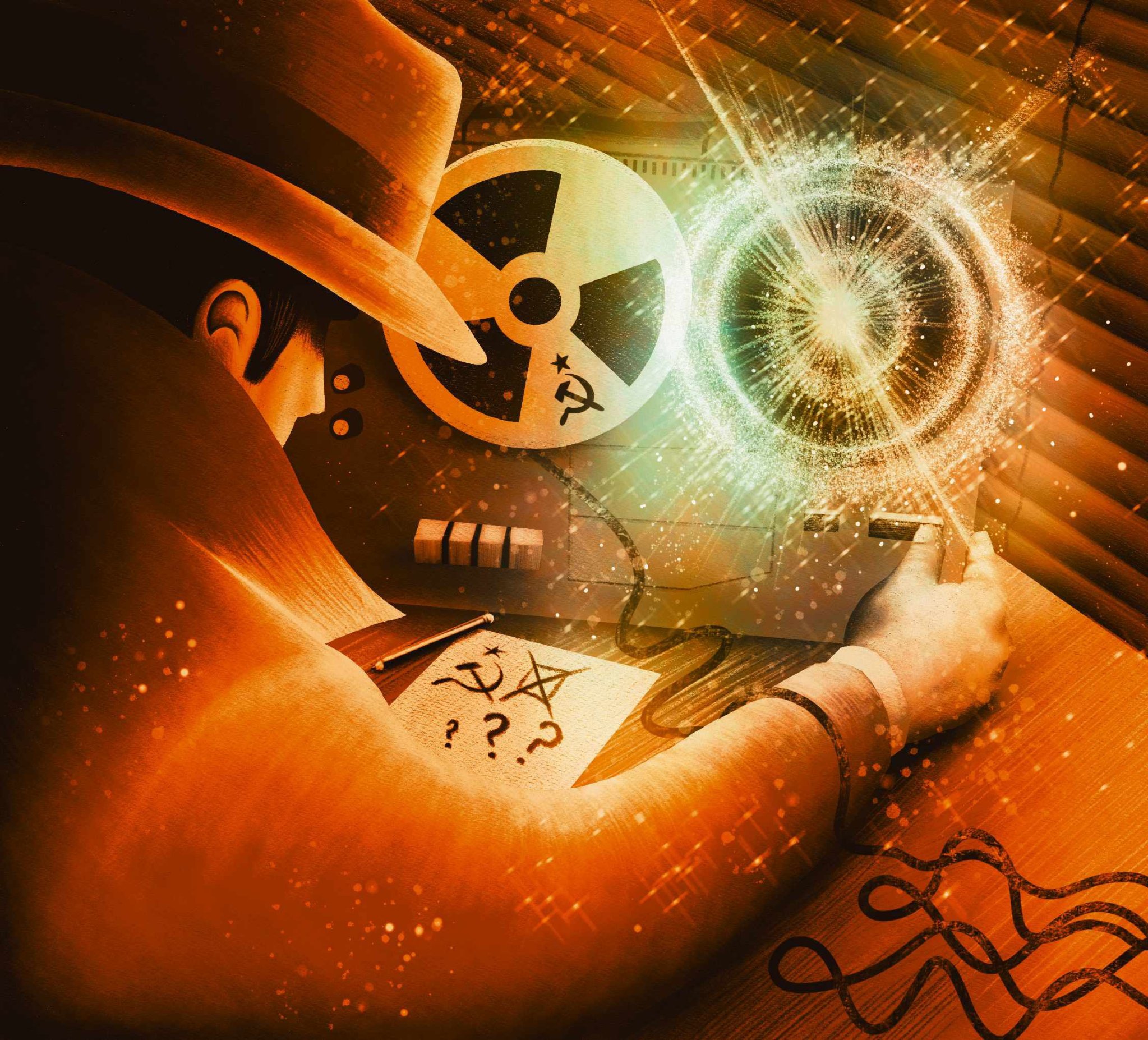COMMENT
DR KATIE MACK:
HOW COLD WAR PARANOIA LED TO A NEW EXPLOSIVE PROBLEM
The search for secret nuclear tests on the dark side of the Moon led to the discovery of the most violent detonations in the Universe

The first instrument to detect a gamma-ray burst (GRB) was watching for the end of the world. What it ended up seeing was quite possibly the end of someone else’s.
In the 1960s, during the Cold War, the US military deployed a group of satellites called Vela to monitor Earth and nearby space for the characteristic flash of high-energy radiation (gamma rays and X-rays) that would give away the location of secret nuclear weapon tests, even if they were carried out behind the Moon.
The first events Vela observed, however, looked nothing like the kind of flash a nuclear bomb would produce, and seemed to be coming from deep space. For years afterwards, experts debated their nature and origin: where could these spectacular bursts of radiation be coming from? Some argued they were extraordinarily bright explosions outside our Galaxy. Others thought they were some kind of ultra-powerful solar flare from stars close by.
The debate about their distance was eventually won through a clever argument that had little to do with the bursts themselves. Observers had noticed that the bursts were appearing all over the sky, with no concentration in any particular direction. Polish astronomer Bohdan Paczyński pointed out that left only two options. One: they’re very close by, presumably arising from nearby stars; or two: they’re so far away that they must be in distant galaxies.
In both cases, they’d appear everywhere, either because the clump of stars around us is too small a piece of the Milky Way for any of the Galaxy’s structure to affect the distribution, or because on the largest scales in the cosmos, there’s no structure big enough to stand out. It would be like if you saw a fuzzy image of yellow dots on a green background, and you didn’t know if you were looking at a close-up of the petals on a bunch of yellow flowers, or an aerial shot of yellow bushes in a field. If it were anything in the middle, you’d see the shape of the bush, or a clump of bushes. But from close enough in or far enough away, the yellow is scattered pretty much everywhere.
In the case of GRBs, we had good reason to think they weren’t that nearby, which left cosmological distances as the only possibility.
“A gamma-ray burst can cause devastation far beyond its own solar system. Some estimates suggest that a planet in the path of the burst could be virtually destroyed, even at a distance of 200 light-years”
GRBs are now thought to have two origins. A ‘short’ GRB is caused by two neutron stars colliding. A ‘long’ GRB occurs when a massive, rapidly rotating star collapses on itself, creates a supernova and, in the process, causes energetic jets of radiation to shoot out through the poles of the stellar remnant. Long GRBs made the news in early October when what may have been the brightest burst ever recorded lit up the cosmos with so much power that it temporarily blinded several satellites and altered radio wave transmission by disturbing the Earth’s ionosphere.
Officially dubbed GRB221009A, it also created a striking set of concentric rings in X-ray images, due to the way the light from the explosion bounced off layers of cosmic dust. Preliminary analyses of the burst suggest the star was so massive that it became a black hole after the explosion, and follow-up observations have found an optical-light afterglow that appears to be associated with the supernova.
We don’t know if the star was orbited by any planets before it went off. If it was, they would have been destroyed by the supernova, if not the burst itself. But a GRB can cause devastation far beyond its own solar system. Some estimates suggest that a planet in the path of the burst could be virtually destroyed, even at a distance of 200 light-years, and impacts on an atmosphere could be felt even farther away than that. There have been hints that GRBs millions of years ago could have changed the chemistry of Earth’s atmosphere enough to set off mass extinctions.
Should we be worried? Probably not. Of the 1,700 or so recorded GRBs, the closest was a billion light-years away. And as far as we can tell, no nearby stars are massive enough to be a threat, and we don’t have reason to believe there are any close neutron star pairs in danger of colliding soon, either.
As astronomers, we’re grateful for GRBs: they help us learn exactly how and why stars explode in such a spectacular way. They also give us a useful probe of the cosmic material between us and them, by shining a very bright backlight on it.
Some theorists have even suggested that GRB221009A’s most energetic photons might only have reached us with the help of exotic hypothetical particles called axions. As we keep watching for new GRBs, we’ll gather more data that will help answer some of these questions, and fortunately, we don’t have to get a close-up look.

DR KATIE MACK
(@AstroKatie) Katie is a theoretical astrophysicist. She currently holds the position of Hawking Chair in Cosmology and Science Communication at the Perimeter Institute for Theoretical Physics.